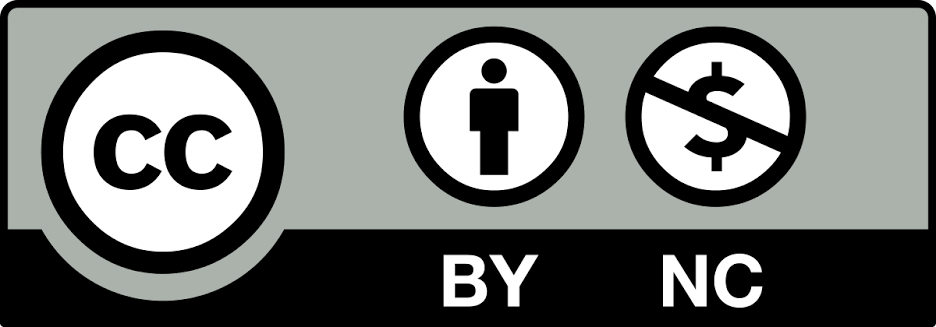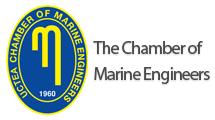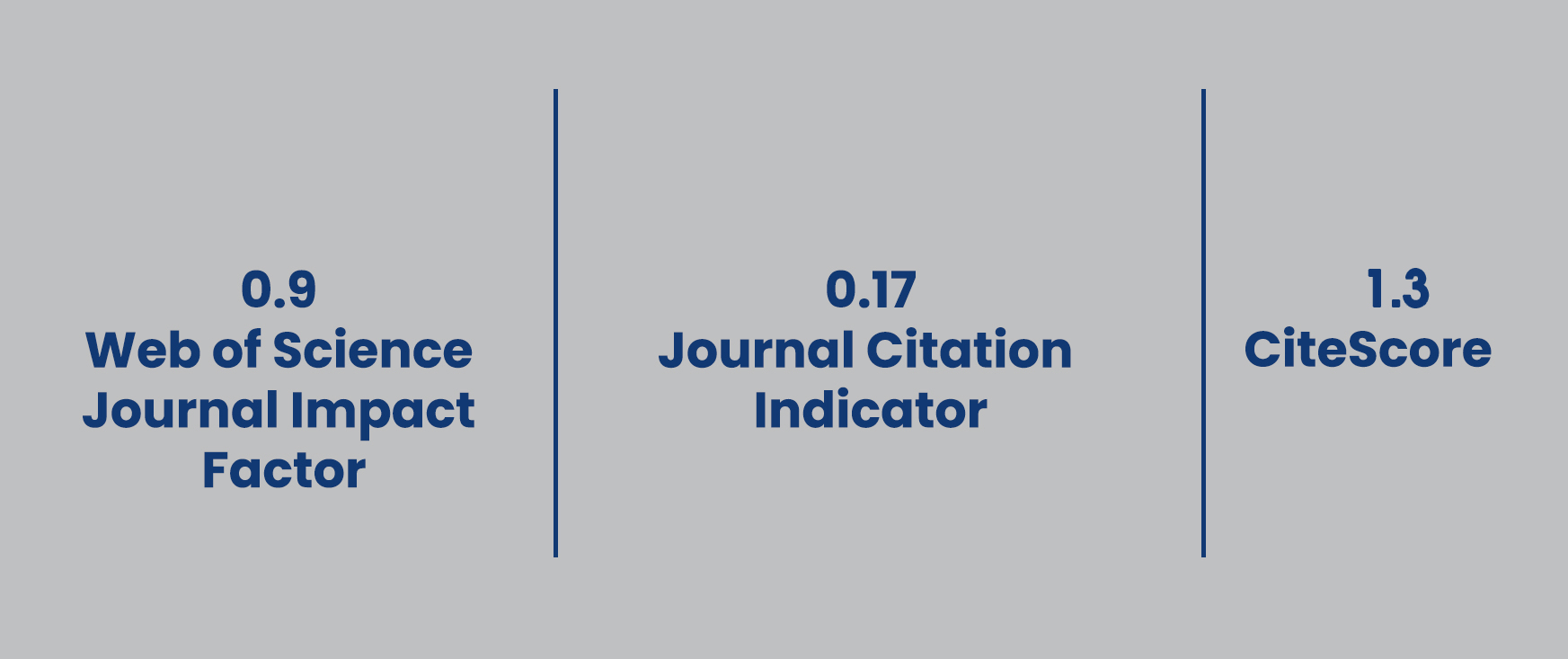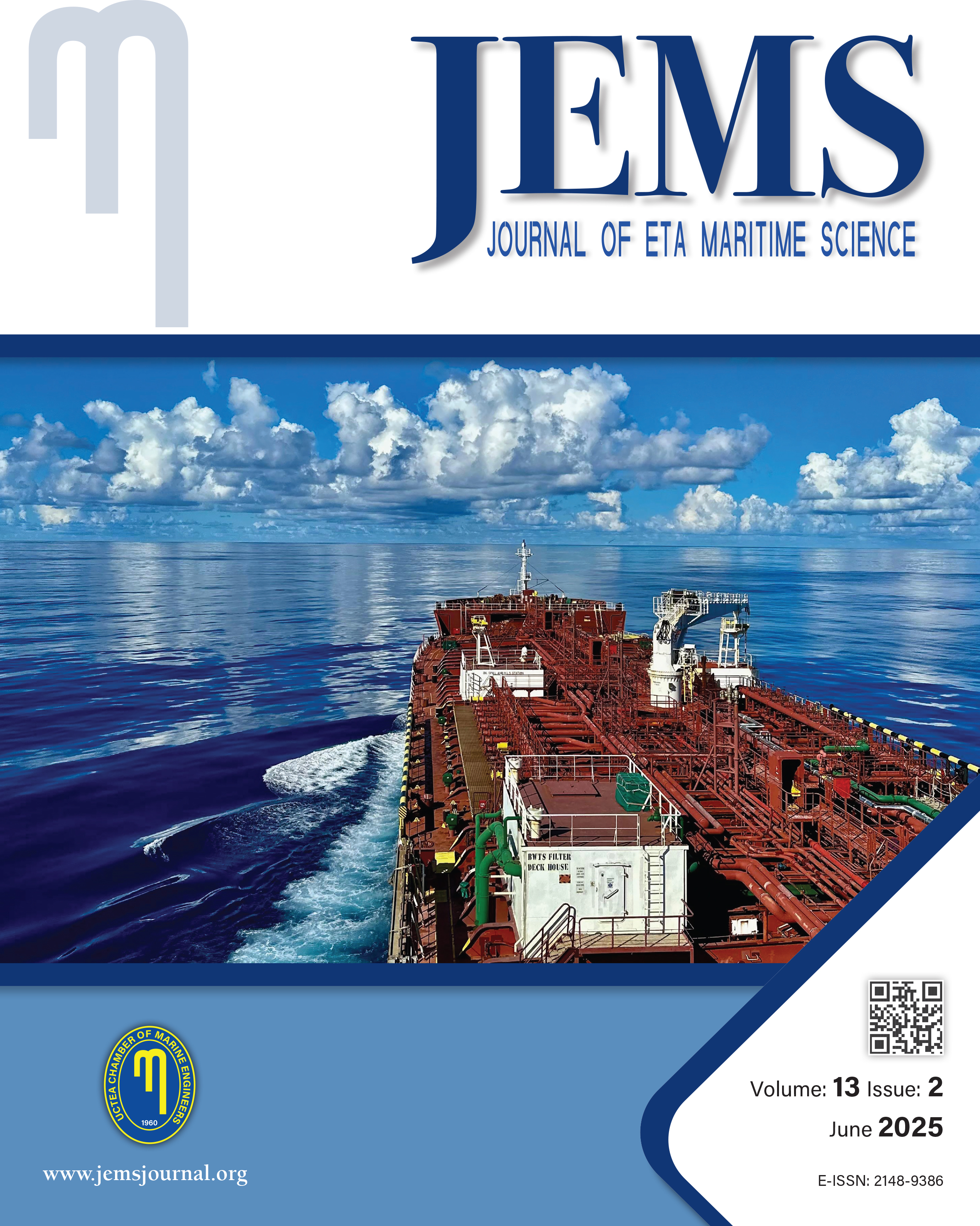

JEMS apply the Creative Commons Attribution NonCommercial 4.0 International Licence to all manuscripts to be published
ABSTRACTING & INDEXING
Volume: 12 Issue: 2 - 2024
| 1. | Full Issue Page I |
| EDITORIAL (ED) | |
| 2. | Editorial Selcuk Nas doi: 10.4274/jems.2024.40326 Page 115 Abstract | |
| ORIGINAL RESEARCH (AR) | |
| 3. | Modeling Longshore Sediment Transport for Sustainable Coastal Management in the Damietta Port Area Ahmed S.A. Ibrahim, Anas M. El Molla, Hany G. I. Ahmed doi: 10.4274/jems.2024.35119 Pages 116 - 127 Within the framework of constructing mega coastal ports in Egypt, this research aims to achieve coastal management sustainability in its surroundings by modeling the Longshore Sediment Transport LST. The literature in the fields of modeling and sediment transport was reviewed and scrutinized. The model was calibrated by contrasting the calculated wave data against 2003 measured data at the Damietta Buoy. The model inputs were tuned to produce a result that was similar to the observed data. Moreover, the model results were validated against 2005 measured data at the Damietta Buoy. Likewise, MIKE21 SM was used to estimate 2011 bed levels within Damietta Port, where 2010 bathymetrical survey data were used. Confident with the model results, it was employed to synthesize transport data for 1940-2020 in terms of LST, Gross LST GLST and Net LST NLST while considering human intervention and implementing ERA5 wave data. Results were obtained and analyzed, and there was a significant correlation between the significant wave height Hs and the wave period Tp and GLST (i.e. R=0.91-0.79, respectively). The analyzed trend results highlighted that in the pre-construction phase of Damietta Port, increases in GLST and NLST were modest (1139.9 and 243.7 m3/year, respectively). However, in the post-construction phase of Damietta Port, they escalated between 4679.47 and 3962 m3/year. The analyzed results indicated that after introducing coastal protection, GLST and NLST decreased to 2978.1 and 2176 m3/year, respectively. |
| 4. | Energy and Exergy Analysis of Diesel-Hydrogen and Diesel-Ammonia Fuel Blends in Diesel Engine Kubilay Bayramoğlu doi: 10.4274/jems.2024.46503 Pages 128 - 135 In response to global warming and pollution, the use of alternative fuels in diesel engines is becoming increasingly important. The purpose of this research is to evaluate the effects of hydrogen and ammonia additions to diesel fuel on carbon emissions and energy and the exergy efficiency of diesel engines and to evaluate sustainability. In this study, the effects of adding 5%, 10%, and 15% of both hydrogen and ammonia to conventional diesel fuel on specific fuel consumption, carbon emissions, energy, exergy, and sustainability index (SI) were examined parametrically. Ammonia and hydrogen fuels reduce CO2 emissions because they are carbon-free. as a result of the research, it was found that compared with ammonia addition, increasing hydrogen addition lowered specific fuel consumption while decreasing engine performance. The findings obtained show that mechanical energy and exergy values increase by 5.5% in the case of hydrogen addition and decrease by approximately 1.1% in the case of ammonia addition. The thermal efficiency and SI increased in the case of hydrogen addition and decreased in the case of ammonia addition. The exergy efficiency was estimated to be 63.37%, an increase of approximately 2.3% over pure diesel. The highest SI and exergetic performance coefficient values were determined 2.73 and 1.63, respectively. In line with the first and second law analyses, the usability of ammonia and hydrogen in diesel engines was evaluated thermodynamically. |
| 5. | Development of Constructive Measures to Reduce the Consequences of Ship Collisions Pavel Burakovskiy doi: 10.4274/jems.2024.24582 Pages 136 - 143 An analysis of the damage caused to vessels by collisions shows that the wreck of most struck ships is mainly due to underwater damage developed because of the accident. Such damage is caused, as a rule, by the presence of bulbs on striking ships that have high longitudinal rigidity and strength exceeding the load-bearing capacity of the framing system several times. Scientists in many countries are looking for ways to reduce the consequences of collisions with ships that have bulbs. Based on the results of the research, schemes for modernizing the forward end of ship hulls by installing bulbs with increased longitudinal compliance to reduce the consequences of ship collisions were proposed, and recommendations were developed for the selection of their characteristics, which make it possible to avoid underwater holes on a struck ship. Bulbs with increased longitudinal compliance were designed using methods of plastic limit analysis. The effectiveness of a modernized deformable bow structure was studied using ANSYS LS-DYNA non-linear finite element method computations. The developed technical solutions ensure that in case of collision in the underwater part of a struck vessel, the deformations of the framing systems will remain insignificant, thereby avoiding the appearance of damage below the waterline. |
| 6. | Data-Driven Approach for Parameter Estimation and Control of an Autonomous Underwater Vehicle Tabassum Rasul, Koena Mukherjee doi: 10.4274/jems.2024.10438 Pages 144 - 155 This paper showcases a data-driven non-linear adaptive controller design employing an unfalsification approach to attain optimal estimates for unknown parameters in an autonomous underwater vehicle (AUV). These estimates are applied to the controller to enable precise trajectory tracking. The controller design presented is capable of adapting to parametric changes and uncertainties while fulfilling the desired performance criteria using an effective parameter update method of unfalsification. The results were validated through simulations conducted using MATLAB/SIMULINK. |
| 7. | Effect of Exhaust Emissions Produced by Fishing Vessels on Air Pollution: A Case Study of Purse Seine Vessels Operating in the Black Sea Eralp Özkaya, Ali Yasin Kaya, Fatih Tonoğlu, Özkan Uğurlu, Jin Wang doi: 10.4274/jems.2024.61214 Pages 156 - 168 In this study, exhaust emissions originating from purse seine fishing vessels were calculated. A bottom-up method based on ship activities was used for emission calculations. Necessary information for the calculations was obtained from the BAGIS (Fishing Vessels Monitoring System) system. Eighteen purse seiners in the Black Sea region with a length of 20 m or more engaged in fishing activities in the 2017-2018 fishing season were used as samples. These vessels were categorized into three different groups according to their length. The emissions produced by each length group were calculated separately under different conditions for vessels identified as port, operation, and navigation. The total emissions in the Black Sea region and Türkiye were estimated. This study provides emission estimates using operational conditions and real data from Turkish-flagged purse seiners engaged in fishing in the Black Sea. In this respect, this research presents novelty and addresses an important gap in the existing literature. The annual emission amount of purse seine fishing vessels in the Black Sea is 260,000 tons, while the annual emission amount from purse seine vessels throughout Türkiye has been calculated as 440,000 tons. As a result, the effectiveness of the Emission Control Area (ECA)/Sulphur ECA region implementation in reducing emissions from maritime activities has been demonstrated. In addition, this study constitutes a source for the exhaust emission inventory of purse seiners in the Black Sea region. |
| 8. | Decision-Making for Shipping Networks Based on Adaptive Cumulative Prospect Theory: A Case Study in Vietnam Yen Thi Pham, Ngoc Cuong Truong, Phung Hung Nguyen, Hwanseong Kim doi: 10.4274/jems.2024.76993 Pages 169 - 185 This paper proposes an optimal method designed for use in a real-life situation to deal with port route choice decisions for evaluating and aggregating the daily net profit for liner shipping services to assist shipping lines in making optimal decisions under risk in the choice of the optimal route with the highest average daily profit for container liner shipping under the following un-certain combination factors: Freight rate, shipment demand, and fuel oil price. A cumulative prospect theory approach considers the decision-makers attitude to describe decision-making under uncertainty applicable for any number of consequences to calculate the daily net profit model for container vessels. The results are compared with benchmark methods such as expected utility theory. This paper includes an application of the proposed approach to Hai An container shipping lines in Vietnam in 2022. Furthermore, adaptive parameters are presented to improve a models performance when data distribution varies over time or across different contexts. The results show that the larger the adaptive parameter, the higher the daily profit, but the growth rate diminishes. The findings suggest that the Hai Phong-Ho Chi Minh route emerges as the safest with the least effect and the lowest variation in cumulative prospect value of daily profit. The Hai Phong (HP)-Tan Cang Cai Mep (TCIT)-Ho Chi Minh (HCM)-Hai Phong route is recommended as the most effective and economically favorable strategy for managers seeking the highest cumulative daily profit. This paper not only explains that the actual calculated results align with decision makers behavior, such as risk aversion, decision makers who prioritize stability are inclined to choose options or strategies that offer a higher level of certainty, even if it means foregoing higher profits, but also provides a practical and easy-to-apply method for choosing a shipping network. |
| 9. | Cruise Passengers Perceived Service Quality During the Pandemic Period via User-Generated Content Batuhan Çullu, Nergis Özispa, Gamze Arabelen doi: 10.4274/jems.2024.35403 Pages 186 - 198 The coronavirus epidemic, which emerged in Wuhan at the end of 2019, spread worldwide and caused more than 4 million deaths as of 2021. The cruise industry, whose goal is to maintain customer satisfaction at the highest possible level, like all service industries, has passed a difficult test with serious coronavirus disease-2019 (COVID-19) cases that emerged on various ships. The new rules of the COVID-19 pandemic are reflected in the service processes of the ships that started to sail again after a long-term pause in the sector. The main motivation of this study is to determine whether the factors affecting customers perceived service quality have changed during the pandemic period in the cruise industry, which is one of the sectors where service quality should be maintained high. Therefore, this study aims to determine the factors affecting the perceived service quality of cruise passengers and determine the new factors that occurred during the pandemic. To achieve this goal, the online narratives of 418 passengers cruising in the European Region between September 2020 and September 2021 were analyzed using Leximancer software, and key elements of passengers perceptions of service quality were determined. As a result of the study, it was found that cabin location, restaurant quality, and COVID-related variables became significant factors affecting the perceived service quality of cruise passengers during the pandemic period. Additionally, disembarkation and embarkation, which were important variables in the pre-COVID period, were reclassified under the COVID category. The study also determined that adherence to COVID-19 measures by cruise companies positively impacted customer satisfaction during this period. |
| 10. | Calculation of Time-Independent Maneuvering Coefficients of an Underwater Vehicle Based on Single Grid Structure Oğuzhan Kırıkbaş, Şakir Bal doi: 10.4274/jems.2024.02703 Pages 199 - 212 A simulation approach relying on a single grid topology has been employed to replicate the motion characteristics of different experimental facilities, including towing tank, rotating arm mechanism, and planar motion mechanism using a single mesh. The control volume and computational mesh setup was built in a way to enable to perform both steady and time dependent simulations to compute entire set of coefficients required by the standard submarine equations of motion. Mesh is consisted of a rectangular prism shaped background and a spherical overset domain which can be rotated, circulated and oscillated depending on the simulation type. To enable the implementation of this approach to the rotating arm simulations, modifications to source code of the open-source computational fluid dynamics software OpenFOAM have been made. Motivation is to change the perspective on the problem by using the knowledge of mathematics behind the solution algorithms and the software structure. In this study extensive set of time-independent coefficients obtained via straight and oblique towing as well as steady rotation simulations are presented for a fully appended generic submarine geometry. Results are then compared with the benchmark experimental data. It is found that the consistency between results are quite satisfactory. |
| 11. | Temporal Analysis of Factors Influencing Countries Maritime Trade Performance with CRITIC-based VIKOR Method Emrah Akdamar, Ersin Fırat Akgül, Maruf Gögebakan, Evrim Işık doi: 10.4274/jems.2024.55798 Pages 213 - 223 Shipping and world trade have grown simultaneously as a result of the increased need for freight transportation capacity brought about by the expansion of world trade. It is important for countries to compare their maritime trade performance in relation to their respective characteristics. It is essential to adhere to the competitive circumstances in order to obtain a larger proportion of the world trade. This study compares maritime trade performance of the 20 countries with the greatest number of ports of call worldwide using multi criteria decision making techniques. Six indicators are weighted by Criteria Importance Through Intercriteria Correlation method and the performances of the countries are ranked by VIeKriterijumska Optimizacija I Kompromisno Resenje method. Rankings for the years 2018-2022 were constructed independently, and after using the Borda approach to integrate them together, the final ranking was produced. The results provide a perspective for countries to improve their maritime trade performance and the opportunity to make an assessment from macro perspective. |
| 12. | Fire Safety Analysis Onboard Passenger Ships by using Fire Dynamics Simulations: Case Study of a Turkish Domestic Passenger Ship Tolga Aycı, Barış Barlas, Aykut Ölçer doi: 10.4274/jems.2024.56514 Pages 224 - 236 Fire hazards onboard are a significant cause of accidents, leading to loss of life and property. According to the Global Integrated Shipping Information System database, 6.82 out of every 1000 passenger/Ro-Ro/Ferry ships have reported fire casualties within the category of serious to very serious, a rate higher than that of other ship types. This study analyzes fire safety on passenger ships through fire dynamics simulations. A Turkish domestic passenger ferry with a capacity of 600 passengers was selected as the case study. The model analyzed fire extinguishing and structural fire protection systems under five scenarios. The heat release rate, total energy, and temperature parameters were also scrutinized. In addition to fire extinguishing systems like sprinklers, structural fire protection systems such as fire-rated bulkheads and decks significantly impact fire safety on passenger ships. During maintenance and operation processes, these components should undergo regular inspections by the crew and technical teams. The key findings of this study are that temperatures in the engine room increase extremely to around 500 °C in the early stages and application of neither structural nor active (extinguishing etc.) fire protection systems together led to fatal consequences onboard passenger ships. |
| INDEX | |
| 13. | Reviewer List of Volume 12 Issue 2 (2024) Page E1 Abstract | |










